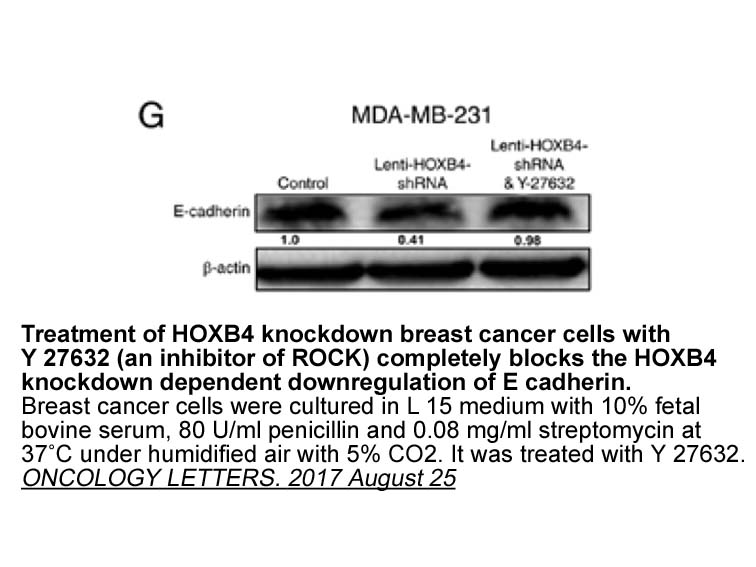Archives
Previous studies have demonstrated ATR inhibition is effecti
Previous studies have demonstrated ATR inhibition is effective for treating cancers combining with chemotherapies in lung adenocarcinoma, gastric cancer, HER2 positive breast cancer and chronic lymphocytic leukemia (S)-(+)-Dimethindene maleate to enhance chemotherapy sensitivity [[16], [17], [18],[20], [21], [22]]. VE-822 is an orally, highly specific ATR inhibitor, which has been entered into clinical trials. However, we have less knowledge about not only the effect of ATR inhibition in ESCC, but also whether it enhances the chemotherapy sensitivity.
Materials and methods
Results
Discussion
Chemoresistance to platinum-based chemotherapy has been a huge challenge with respect to achieving optimal treatment outcomes in ESCC. DNA damage induced by cisplatin-DNA adducts causes DNA replication stress and triggers the DDR, which is considered an important mechanism for the development of chemoresistance [6]. Previous studies have shown that DNA replication stress induced by genotoxic agents, such as cisplatin, allows inhibitors targeting the DDR pathway to serve as an effective therapy for ESCC. ATM and ATR inhibitors have been entered into clinical trials pertaining to some types of solid cancers. However, whether DDR inhibitors can be used in ESCC treatment is not known. In our study, we found that endogenous DNA replication stress occurs in ESCC cells. p-ATM and p-ATR were endogenously expressed in ESCC cells, and their activation was significantly enhanced upon exposure to cisplatin. This finding serves as an important clue indicating that DDR pathway inhibitors can be used in ESCC treatment.
Interestingly, we found that ATR activation (represented by ATR-pSer428 expression) was associated with a pathologic response to chemotherapy and poorer long-term outcomes in patients who underwent neoadjuvant chemotherapy, indicating that p-ATR expression may be used as a biomarker for chemoresistance in ESCC. Therefore, we hypothesized that the combination of ATR inhibition and platinum is an effective therapy for ESCC, which relies on ATR signaling to facilitate DNA repair. We found that ESCC cells were sensitized to cisplatin upon exposure to an ATR inhibitor in vitro and in vivo, a finding sup ported by the data pertaining to cell viability. Additionally, we demonstrated that STAT3 may play a critical role in VE-822-mediated effects, as p-STAT3 expression was remarkably inhibited in KYSE450 and KYSE70 cells treated with the combination of cisplatin and VE-822. In previous study, it has been shown that STAT3 was essential for efficient repair of damaged DNA, which was suppressed when DNA damage response was inhibited [[25], [26], [27]]. To further learn the effect of combination of VE-822 and cisplatin on the transcriptional profiling, we performed RNA-seq in KYSE450 exposure to combination of VE-822 and cisplatin. DEG analysis identified 1163 genes significantly altered in cells bearing treatment, with 555 genes up-regulated and 608 genes down-regulated (Figs. S3a and b). These genes were then classified based upon their signaling pathways and biological functions using KEGG analysis (Figs. S3c and d) and GO analysis (Figs. S3e and f). We found that treatment with the combination of VE-822 and cisplatin caused a wide of pathways changes including Hippo pathway, MAPK pathway, JAK-STAT pathway, PI3K-AKT pathway and platinum resistance pathway, etc. To validate the RNA-seq results, we selected 10 DEGs to examine their expression by RT-PCR. These 10 genes, were enriched into drug resistance related signaling pathways, including p53 pathway, apoptosis, platinum drug resistance, PI3K-Akt signaling pathway [[28], [29], [30], [31]] and JAK-STAT signaling pathway [32]. The expression patterns of selected DEGs in the RNA-seq and RT-PCR were highly similar (Fig. S4). It indicated that our RNA-seq results were reliable, and on the other hand, it implied that the dysregulated signaling pathway may be the key to explore the mechanism underlying the sensitization.
ported by the data pertaining to cell viability. Additionally, we demonstrated that STAT3 may play a critical role in VE-822-mediated effects, as p-STAT3 expression was remarkably inhibited in KYSE450 and KYSE70 cells treated with the combination of cisplatin and VE-822. In previous study, it has been shown that STAT3 was essential for efficient repair of damaged DNA, which was suppressed when DNA damage response was inhibited [[25], [26], [27]]. To further learn the effect of combination of VE-822 and cisplatin on the transcriptional profiling, we performed RNA-seq in KYSE450 exposure to combination of VE-822 and cisplatin. DEG analysis identified 1163 genes significantly altered in cells bearing treatment, with 555 genes up-regulated and 608 genes down-regulated (Figs. S3a and b). These genes were then classified based upon their signaling pathways and biological functions using KEGG analysis (Figs. S3c and d) and GO analysis (Figs. S3e and f). We found that treatment with the combination of VE-822 and cisplatin caused a wide of pathways changes including Hippo pathway, MAPK pathway, JAK-STAT pathway, PI3K-AKT pathway and platinum resistance pathway, etc. To validate the RNA-seq results, we selected 10 DEGs to examine their expression by RT-PCR. These 10 genes, were enriched into drug resistance related signaling pathways, including p53 pathway, apoptosis, platinum drug resistance, PI3K-Akt signaling pathway [[28], [29], [30], [31]] and JAK-STAT signaling pathway [32]. The expression patterns of selected DEGs in the RNA-seq and RT-PCR were highly similar (Fig. S4). It indicated that our RNA-seq results were reliable, and on the other hand, it implied that the dysregulated signaling pathway may be the key to explore the mechanism underlying the sensitization.